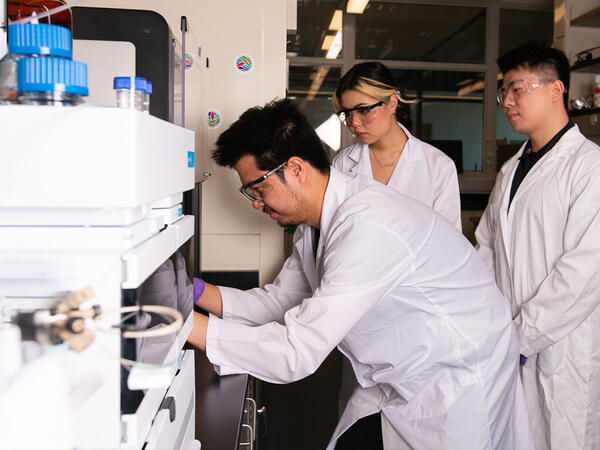
Ping
Lee
144 College Street
Toronto ON M5S 3M2
Canada
Area of Research
Ping Lee’s current research focuses on developing new approaches, including the study of mechanisms and applications of solid dispersions and other systems, to enhance and regulate the delivery of poorly soluble drugs for oral therapy and nitric oxide for wound healing.
Research Challenge
For a drug to be effective, it must reach the target tissues at appropriate amounts. For an oral drug, this means overcoming several physiological challenges, including dissolving and surviving the harsh environment of the gut, crossing the gut lining to enter the bloodstream, and avoiding immediate destruction and removal from the circulation before reaching the target organ.
Many new drugs have low solubility and consequently poor bioavailability (the proportion of the administered drug capable of reaching the bloodstream unchanged), meaning that larger doses of the drugs are required to have an effect because so much of the drug does not get absorbed and reach its intended target. These poorly soluble new drugs have a crystalline structure, which makes them harder to dissolve and be absorbed. Therefore, more effective drug delivery systems are needed to achieve the desired therapeutic effect.
Proposed Solution
The Lee lab investigates the effectiveness of their drug delivery systems using physical and chemical studies, as well as animal models.
The team is designing effective systems called amorphous solid dispersions (ASDs) for the delivery of poorly soluble drugs and investigating how these delivery systems are able to improve drug dissolution and bioavailability. The Lee team converts drug crystals into the amorphous state, which has greater transient solubility and bioavailability than the crystalline drug, and stabilizes the amorphous drug in an ASD based on special polymer carriers where it can be preserved in the long term and is ready to be used for drug delivery.
The lab also develops delivery systems for nitric oxide (NO) used for wound healing. NO helps repair chronic non-healing wounds such as diabetic ulcers, but it is limited by its extremely short half-life in the body. The Lee lab has developed a novel NO delivery system based on a large molecule complex that provides controlled release of NO over prolonged durations and has demonstrated wound healing in animal models.
Impact To Date
Lee has done pioneering research in the field of controlled-release drug delivery relating to hydrogels and polymer matrix systems earlier in his career. His recent research tackles the challenge of low bioavailability of oral medications due to poor aqueous solubility and continues to further the understanding of drug release mechanisms from amorphous solid dispersions. As a result, Lee has successfully developed drug delivery systems that enhance the bioavailability of drugs and regulate where and when the drug is released. Such delivery approaches have rescued a number of poorly soluble drugs from being abandoned early in the development process by improving the delivery of these drugs to enhance their absorption such that they may reach their intended targets where they could exert desirable therapeutic effects. With the development of effective drug delivery systems, many otherwise unusable drugs due to poor solubility may one day reach clinical practice, and some that are already being used in practice might be made more effective.
Honours and Awards
- Association of Faculties of Pharmacy of Canada (AFPC), AFPC/Pfizer Research Career Award. 2019.
- Fellow of the American Association of Pharmaceutical Scientists (AAPS), elected 2013.
- Inaugural GlaxoSmithKline Chair in Pharmaceutics and Drug Delivery, Leslie Dan Faculty of Pharmacy, University of Toronto, 2004-2014.
Publications
Keywords: drug development, drug delivery, low drug solubility, pharmacokinetics, solubility enhancement, mechanism of drug release

